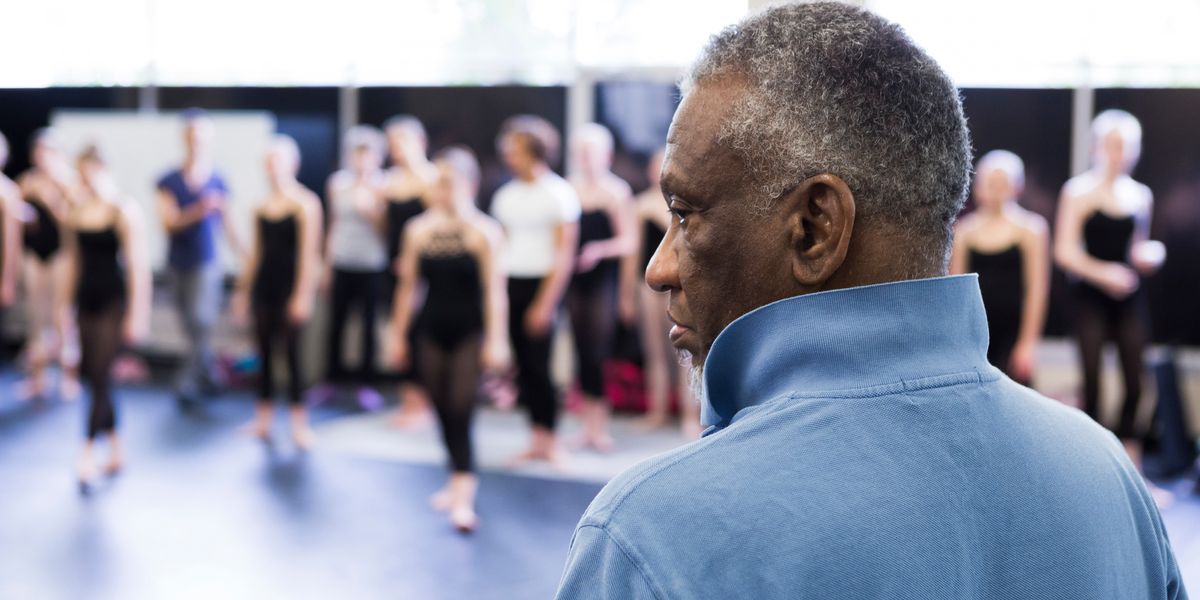What Can a Choreographer Do When They Want to Take Their Work in a New Direction? Donald Byrd Shares Some Insights
As a choreographer, recognition brings opportunity. However, making a name for yourself comes with certain drawbacks. When audiences and funders have particular expectations, taking your work in a new direction is more than just an artistic risk: It can mean losing favor with the people you need to sustain your work. How can a choreographer balance these concerns with their artistic aspirations?
Dance Magazine
asked Donald Byrd, a choreographer whose long and eclectic career spans five decades and two coasts. Byrd got his start dancing for other choreographers, including Twyla Tharp and Gus Solomons jr. He was artistic director of his own company, Donald Byrd/The Group, based in Los Angeles and then New York City, from 1978 until 2002, when he took over as artistic director of Spectrum Dance Theater in Seattle. Along the way, Byrd has also choreographed numerous commissions for other companies, including Alvin Ailey American Dance Theater and the Dayton Contemporary Dance Company.

Find people who will tell you the truth
“When I started my company, I had no expectations, because all I wanted to do was make my work. In 1978, 1979, most of the people in the audience at that point were my friends, and friends of friends. How people saw me then was that I was rebellious, that the work was confrontational in some ways. People saw me as kind of a punk choreographer because I used punk music.
“In the ’70s, being in the downtown postmodernist thing, you wanted your peers’ approval more than anything else. I always felt that I kind of straddled uptown and downtown dance, so some of the things I would do didn’t sit well with everybody. Did it stop me from doing those things? No. But I was angry a lot, because I felt like I wasn’t getting the kind of attention from my peers that I wanted. Except that I did have a lot of support from David White [then the executive director of Dance Theater Workshop]. In some ways he was not only a gatekeeper, he was an influencer. His support meant a lot to me emotionally, and to my career. He was always honest with me, and he didn’t always like what I did. I appreciated that.”
Stay driven by your art
“Later, when the company got even more structured and organized, and there was more public knowledge and funding, then other considerations started to come in. Money, donors, forming a board. Not only was it about being successful as an artist, and making work that I liked and was proud of. Then the other part of it was, What do your funders think of your work? Who is the audience?
“I think that caused me to be really clear for myself about why I was doing what I was doing. I could not take into consideration how people would respond. That included funders and audiences. Part of the risk, then, is that maybe nobody will show up. But when I tried to make things that I thought would please people, I thought those pieces were disasters. Technically they were good, in terms of how they were structured, but I hated looking at them. One piece that we did that was extremely successful and had a lot of commissioning money behind it, after 30 weeks of touring, I just never wanted to see that piece again. That experience made clear to me that I needed to be driven by the artistic part, and let the chips fall where they would fall.”
Find your allies
“When I came to Spectrum, that’s where the pressures really came in. It had been a jazz-dance company. During the interview process, I was very clear that I am not a jazz-dance choreographer and that’s not what I’m going to do. But still I got here, and within a few weeks, most of the board had resigned. Everyone hated what I was doing. They didn’t even understand what I was saying, because it was outside of anything they had experienced. To the board, the teachers, the audiences, the donors, I just seemed like a monster.
“The first five years were probably the roughest. But I had the opportunity to make work, which is why I came here. I wanted the opportunity of that daily practice. The only reason I survived was that the president of the board was a big supporter. Supportive in words and in money. Eventually, I think the seeds were sown about what kind of artist I was. People started to have expectations that I would make things that were a little edgier.”
Keep evolving
“I had always done work that had social justice leanings. But that had never been my complete focus. Once I came to Spectrum, I felt like my technique as a choreographer was developed enough to where it could actually handle that content. And I was also influenced by what was going on around me in the world, especially with the police shootings of Black people. I can’t make abstract work when the world is a mess.
“Being around young people in the pre-professional program at Spectrum, and talking to them, that was also a big awakening for me. At one point I asked my students what was their biggest fear, and they said climate change. I think these multigenerational conversations are really important. I feel like they’ve been propelling me. They have caused me to really think about ways to not be hamstrung or shut down, but to imagine solutions and different ways of doing things and different futures. Identify the problems; don’t fret, do something.”
This story is part of a
week-long series guest edited for Dance Magazine by choreographer Kyle Abraham.




